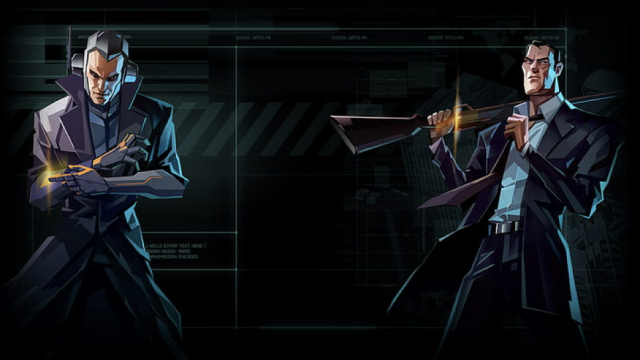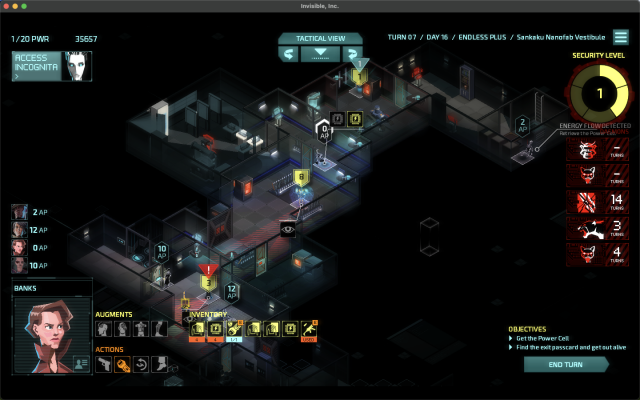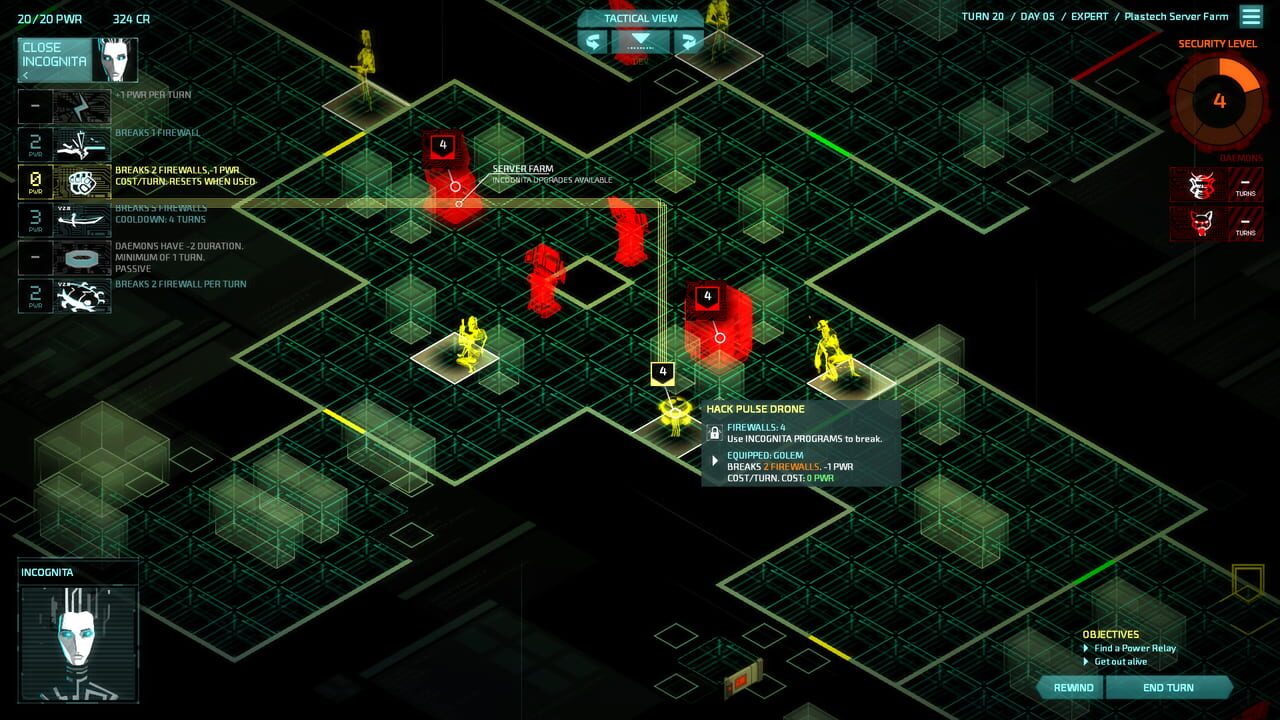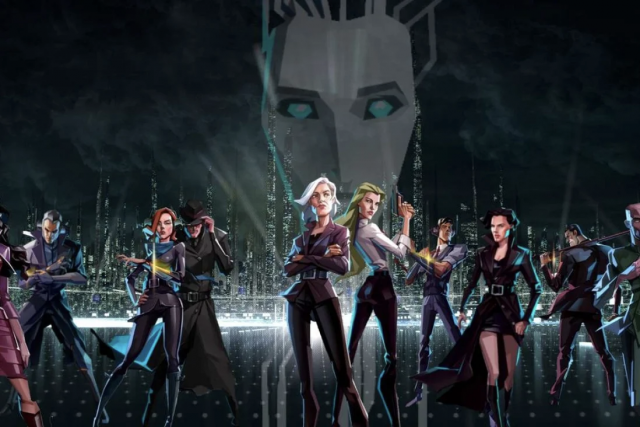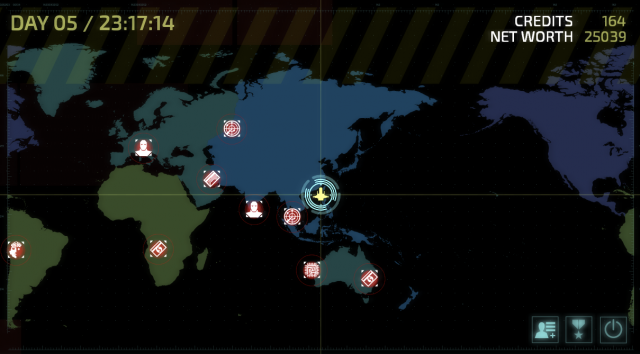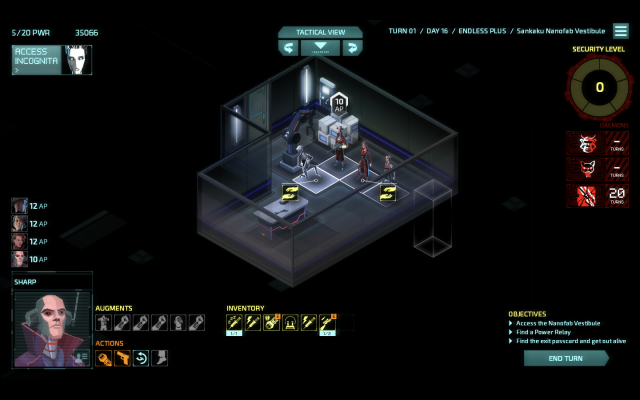
The caption above is a pretty succinct explanation of the core mechanics of the game. The gameplay is simple: time moves only when you move, use this ability to take down numerous bad guys with a variety of weapons lying all around the map. Originally it started as an entry from 2013 7 day FPS challenge, it further expanded to a full game with funding from Kickstarter. This is one of the most engaging FPS titles that I’ve played and it adds a new dimension to FPS genre in which the genre has gotten pretty stale over the years (my honest opinion, don’t stone me if you enjoy FPS games).
Despite dying repeatedly in this game, I could not help but to keep retrying over and over again. Because time only moves when you move, everything around you slows down, allowing you to evade bullets and take your time to aim with utmost precision. It feels incredibly badass to be able to dodge incoming bullets similar to the famous bullet dodging scene in the Matrix. It is thrilling to see bullets whizz past you knowing that if one of these hits you, it’s game over.
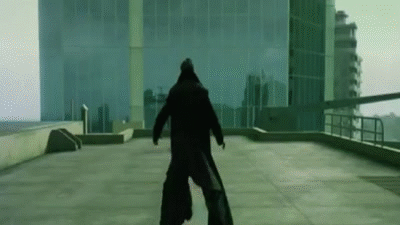
Being able to dodge bullets in slow motion is a powerful selling point, but it’s not the only element that keeps me engaged in the application. The reason why I keep going back to the game is due to the high level of freedom, creativity and immersion offered. In VR, you can individually control each hand. This allows for more immersive gameplay as you feel directly involved in the middle of the gunfight itself. Instead of playing through WASD + mouse on PC, your hands are frantically searching for anything useful to fight back.
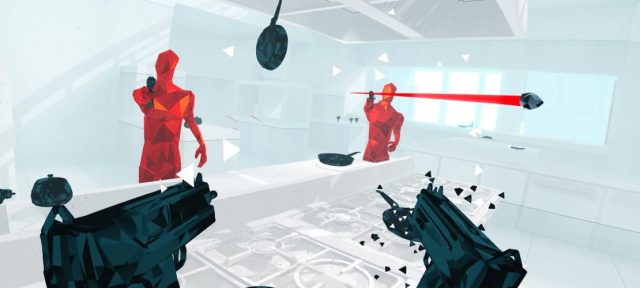
To make things more interesting, each hand can carry a different weapon. Other than firing guns, you can actually throw your weapons to kill, hit enemies in close range or even block bullets like in a Japanese anime fight. This allows for many creative approaches to the game. You can dual wield pistols like Lara Croft, throw bottles like in a bar fight or shank opponents up-close. Unlike most VR games that has clunky controls and being largely restrictive, freedom in Superhot VR is largely bounded by your wits, luck and the amount of space in your room.
The first feature that immediately caught my eye is the minimalist, abstract art style. I really liked the simple color palette of the game: white means environmental backdrop, red means bad guys, navy blue means weapons, only 3 crucial colours reminiscent of the popular “3 Colour Rule” in fashion. It is stunning to see the bad guys shatter like glass when they get killed. Other than simply being a unique treat for the eyes, this minimalist graphics serves an important function: allowing the players to see important elements clearly. In a game where you have to dodge bullets to survive, you have to be able to see the bullet trails, where the weapons are, where the bad guys are located. With all these things that the player have to look out for, I can’t see this game having a realistic-looking graphics replicating the Matrix as it would be too visually noisy to be immersed in evading bullets. Overall, this abstract art style is an excellent choice, both aesthetically-stylish and utilitarian.
The next nice feature that I would like to highlight is the game balance & direction. In this game, ammunition is scare. You run dry after firing 2-5 rounds. Made worse by the fact that you can’t reload, forcing you to scavenge weapons from fallen enemies. The lack of a hit-point bar makes it very clear that once you’re hit, you are dead. The combination of the inability to reload, death on hit and the slow motion gameplay makes the direction of the game very clear: Be careful, do not waste bullets and kill with well-timed precision and finesse. Not only does this make the game engaging in terms of difficulty, it reinforces the image that you don’t need overwhelming firepower to win. All you need are just your wits and using your foes’ weapons against them. This makes Superhot VR stand in the interesting middle ground between being an action and a strategy game.
However despite the game having nailed well in numerous aspects, there are still some shortcomings to be addressed.
The first shortcoming is insufficient levels and the lack of difficulty chokepoints (aka mini-bosses). The campaign (story mode) eventually becomes boring, and I ended up only playing endless mode, where I try my best to survive for as long as possible. The lack of bottlenecks and levels might make some users lose interest in the game experience gradually. Taking this game to a multiplayer realm is extremely daunting. Hence, my suggestion to improve replay-ability and engagement would be to make the game more rogue-like. This heavily ramps up the game’s unpredictability, making the experience more interesting for veterans.
The next is the ‘lobby’ of the game which I think is not very intuitive and have perspective scaling issues. To start the game, you have to insert a floppy disk (which some players might not even know what a floppy disk is!) representing a game mode, and then putting on a VR headset from above (yes, putting on a VR headset in-game while wearing a VR headset). I have to stand up physically to reach for the top to try to put on the virtual VR headset and it is difficult to grab. Not to mention the floppy disk representing different game modes are not the most easy to understand. This act of inserting a disk and then putting a VR headset looks cool, but to a first-timer with no prior experience of the game, this can be a bummer as they probably do not know what to do to start the game.

The last shortcoming is the limited freedom of movement. While the VR arm movement are well-executed, I felt that locomotion (movement from one place to another) still leaves a lot to be desired. You can move in the map to a limited extent as long as you have sufficient space in your room, but gameplay is still largely static. The developer addressed this by having the option to teleport to another spot in the room with a grab of a pyramid after slaying all/enough enemies.

I understand that this implementation of locomotion is easy for the user, but I really wished I could have the option of moving in all 4 directions in the room like your typical FPS shooter. Decimating an enemy stronghold on the offence is much more fun than defending myself from enemies.
Overall, this is still a fun and interesting VR application that is easy to learn and fun to play. I had so much fun doing numerous goofy antics, like lying down on the floor killing minions or waving my hands to speed up the game. All the while, my friends having a great laugh watching me play. I highly recommend this to anyone who wants a VR application that is easy to pickup and play while still wanting to feel like a badass.

